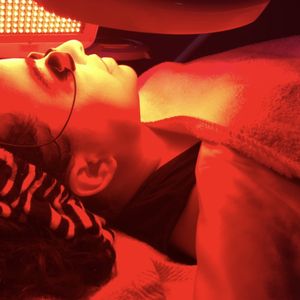When it comes to recovering after an intense workout, athletes and fitness enthusiasts are constantly on the lookout for new and effective methods to accelerate healing and improve performance. While traditional recovery methods like rest, hydration, and stretching are crucial, many are now turning to red light therapy (RLT) as a powerful addition to their post-workout routine.
But what exactly is red light therapy, and how does it benefit workout recovery? Let’s dive into the science and explore why this therapy is gaining popularity in the fitness world.
What is Red Light Therapy?
Red light therapy (RLT), also known as low-level laser therapy (LLLT) or photobiomodulation (PBM), uses low-wavelength red and near-infrared light to penetrate the skin and tissues. This light stimulates the mitochondria—the powerhouse of our cells—helping to increase energy production and promote healing at a cellular level.
During red light therapy, specialized devices emit red or near-infrared light to target damaged tissues. The light wavelengths are absorbed by the cells and tissues, initiating several beneficial processes that accelerate recovery.
How Red Light Therapy Helps with Workout Recovery
- Reduces Inflammation
Intense workouts, especially those involving heavy lifting or endurance training, can lead to microtears in muscle fibers. These tears are a natural part of the muscle-building process, but they can also cause inflammation, stiffness, and discomfort. Red light therapy has been shown to reduce inflammation by improving circulation and stimulating the release of anti-inflammatory cytokines. This helps alleviate swelling and promotes faster healing of damaged tissues. - Accelerates Muscle Repair
Red light therapy enhances the production of collagen and elastin, two vital proteins involved in tissue repair. This is especially important after workouts that lead to muscle strain or injury. By stimulating cellular repair processes, RLT can shorten the recovery time needed for muscles to rebuild and strengthen. - Improves Blood Flow
Proper blood circulation is crucial for delivering oxygen and nutrients to muscles after a workout. Red light therapy has been shown to enhance blood flow by promoting the dilation of blood vessels. This increased circulation helps transport oxygen and nutrients to the muscles more efficiently, supporting faster recovery and reducing the feeling of fatigue after exercise. - Relieves Muscle Pain
One of the most sought-after benefits of red light therapy is its ability to reduce pain. By stimulating the production of endorphins and promoting better circulation, RLT can help manage post-workout muscle soreness (DOMS). Regular use of red light therapy can result in reduced muscle pain and tension, allowing you to get back to your workout routine more quickly. - Boosts Cellular Energy Production
One of the most exciting aspects of red light therapy is its ability to stimulate mitochondrial function. The mitochondria in your cells are responsible for producing ATP (adenosine triphosphate), which is the body’s primary energy source. By improving mitochondrial function, RLT helps cells produce more energy, aiding in faster muscle recovery and better overall performance during workouts. - Promotes Skin Healing
If you’ve been pushing yourself in the gym or outdoors, your skin can suffer from abrasions, cuts, or post-workout rashes. Red light therapy can help speed up the healing process by stimulating the production of new skin cells and improving collagen production. This can be particularly useful for those who experience skin irritation due to repetitive motion, such as runners or cyclists. - Reduces the Risk of Overtraining
Overtraining occurs when the body is pushed beyond its ability to recover, leading to fatigue, muscle breakdown, and decreased performance. By improving recovery times and reducing inflammation, red light therapy can help prevent overtraining by giving the body the support it needs to bounce back faster between workouts. This allows athletes to train more effectively and with less risk of burnout.
How to Incorporate Red Light Therapy into Your Routine
To experience the benefits of red light therapy, you can use devices such as handheld units, light panels, or full-body beds. For workout recovery, it’s best to use RLT within 30 minutes to an hour after exercise. Sessions typically last anywhere from 5 to 20 minutes, depending on the device and the area being treated.
If you’re considering adding red light therapy to your post-workout routine, make sure to follow the manufacturer’s instructions for optimal results. It’s also worth noting that consistency is key – regular use over time will provide the most noticeable benefits.
Conclusion
Red light therapy is emerging as a powerful tool in the world of fitness recovery. From reducing inflammation and muscle pain to accelerating healing and improving circulation, RLT offers a wide range of benefits for those looking to recover faster and train harder. Whether you’re an elite athlete or a casual gym-goer, incorporating red light therapy into your recovery routine could be the game-changer you need to take your performance to the next level.
If you’re looking to enhance your post-workout recovery and support your body’s natural healing process, consider giving red light therapy a try. Your muscles will thank you!

